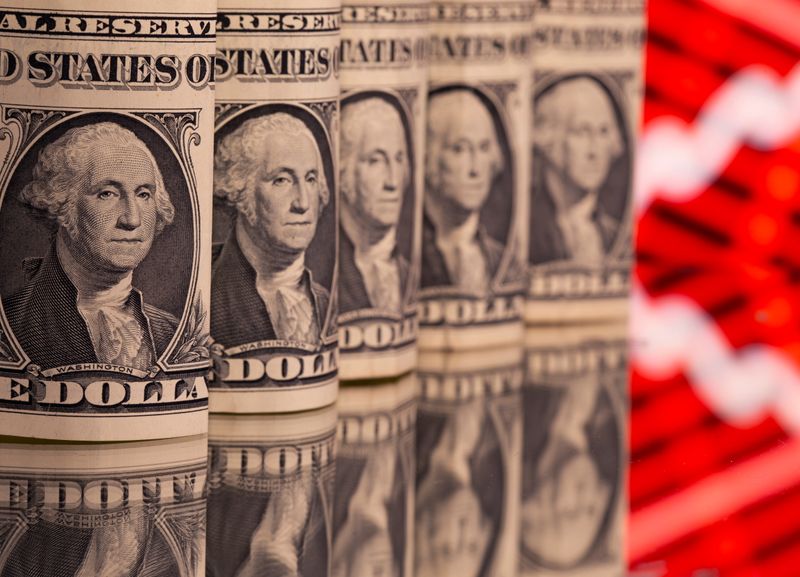By Rae Wee
SINGAPORE (Reuters) – The dollar struggled to make headway on Wednesday after a cut on the U.S. government’s top credit rating by Fitch raised questions about the country’s fiscal outlook, though it drew some support from a relatively resilient run of economic data.
Rating agency Fitch on Tuesday downgraded the United States to AA+ from AAA in a move that drew an angry response from the White House and surprised investors, coming despite the resolution two months ago of the debt ceiling crisis.
That nudged the greenback lower, lifting the euro toward $1.10. The single currency was last 0.11% higher at $1.0996, after earlier touching a session-high of $1.1020.
Sterling similarly gained 0.05% to $1.2782, while the U.S. dollar index was last 0.09% higher at 102.09, after slipping broadly in the wake of the Fitch news.
“We don’t think the Fitch decision is that material. Certainly, we’ve seen the market move a little bit this morning … but over the near term, I don’t think it’s going to be a longer lasting driver,” said Rodrigo Catril, senior currency strategist at National Australia Bank (OTC:NABZY) (NAB).
The dollar was also underpinned by economic data on Tuesday that showed U.S. job openings remained at levels consistent with tight labour market conditions, even as they fell to the lowest level in more than two years in June.
A separate report suggested U.S. manufacturing might be stabilising at weaker levels in July amid a gradual improvement in new orders, though factory employment dropped to a three-year low.
Elsewhere, the Japanese yen was roughly 0.1% stronger at 143.21 per dollar, paring some of its gains from earlier in the morning.
Minutes of the Bank of Japan’s (BOJ) June policy meeting released Wednesday morning showed that the board agreed on the need to keep ultra-loose policy for the time being.
The yen had seen three straight sessions of declines since Friday’s BOJ policy decision to loosen its grip on interest rates, as traders are still trying to assess the implications of the move.
“I think the market is still trying to get their head around what this whole thing means,” said NAB’s Catril.
The Australian dollar rose 0.12% to $0.6621, reversing some of its sharp 1.57% fall in the previous session after the Reserve Bank of Australia (RBA) on Tuesday held interest rates steady and signalled that it might be done tightening.
“It would have sent a confusing message if the RBA hiked… given trimmed mean inflation met their June forecast and retail trade dipped ahead of (the) decision,” said Matt Simpson, senior market analyst at City Index.
The New Zealand dollar fell 0.23% to $0.6136, after data on Wednesday showed the country’s jobless rate hit a two-year high in the second quarter.



